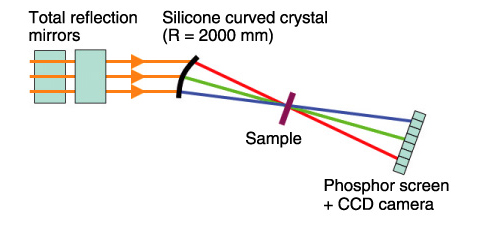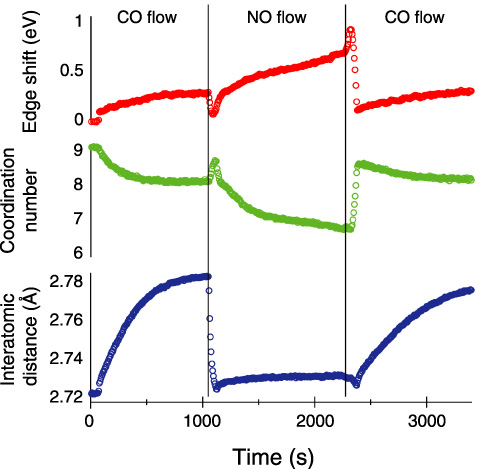
Fig.4-10 Schematic of the dispersive XAFS system

Fig.4-11 Variations of XAFS parameters
Removal of NO by reaction of CO on metal fine particles is an important process in automotive exhaust catalysts. During this reaction, it has been pointed out that the metal particle shows a rapid change of structure. An X-ray absorption fine structure (XAFS) technique having an element-selective feature is suitable for the direct observation of supported fine particles. This advantage was used to study the CO/NO catalytic reaction on Pd metal fine particles.
The main optical equipment system is displayed in Fig.4-10. The dispersive XAFS system has no mechanical motion process, which is different from a conventional system that requires a change in the X-ray incident angle to obtain the XAFS spectra. Fast and stable observation is achieved using this dispersive XAFS system.
Fig.4-11 shows the variations of the XAFS parameters during successive flow of CO and NO for Pd metal particles on aluminum oxide. From this figure, we determined the changes of structure, shape, and oxidation state for the Pd metal particles during the catalytic reaction. Because the relative accuracy for the interatomic distance is as fine as 0.002 Å, a precise determination of the metal particles has been realized.
Here we explain how the metal particles change during the catalytic reaction. By CO first flow, the interatomic distance is elongated about 0.07 Å. Part of the adsorbed CO is considered to dissociate, and the lattice is expanded by atomic C. The coordination number gradually decreases at the same time scale as the increase in the interatomic distance, which means that CO dissociative adsorption can induce the dispersion of the Pd metal fine particles. Just after NO flow, these parameters rapidly recover their original values. The edge shift denotes a gradual increase after CO removal by NO flow, which indicates that the surface of the Pd particles is gradually oxidized by NO. This surface-oxidized layer is smoothly removed by the next CO flow with a slight positive shift indicating the particular adsorption state.
Direct and time-resolved information on metal particles during a catalytic reaction has revealed the dynamic structure of the Pd metal particles. We believe that such a new viewpoint can aid in the discovery of a catalyst possessing new reaction properties.